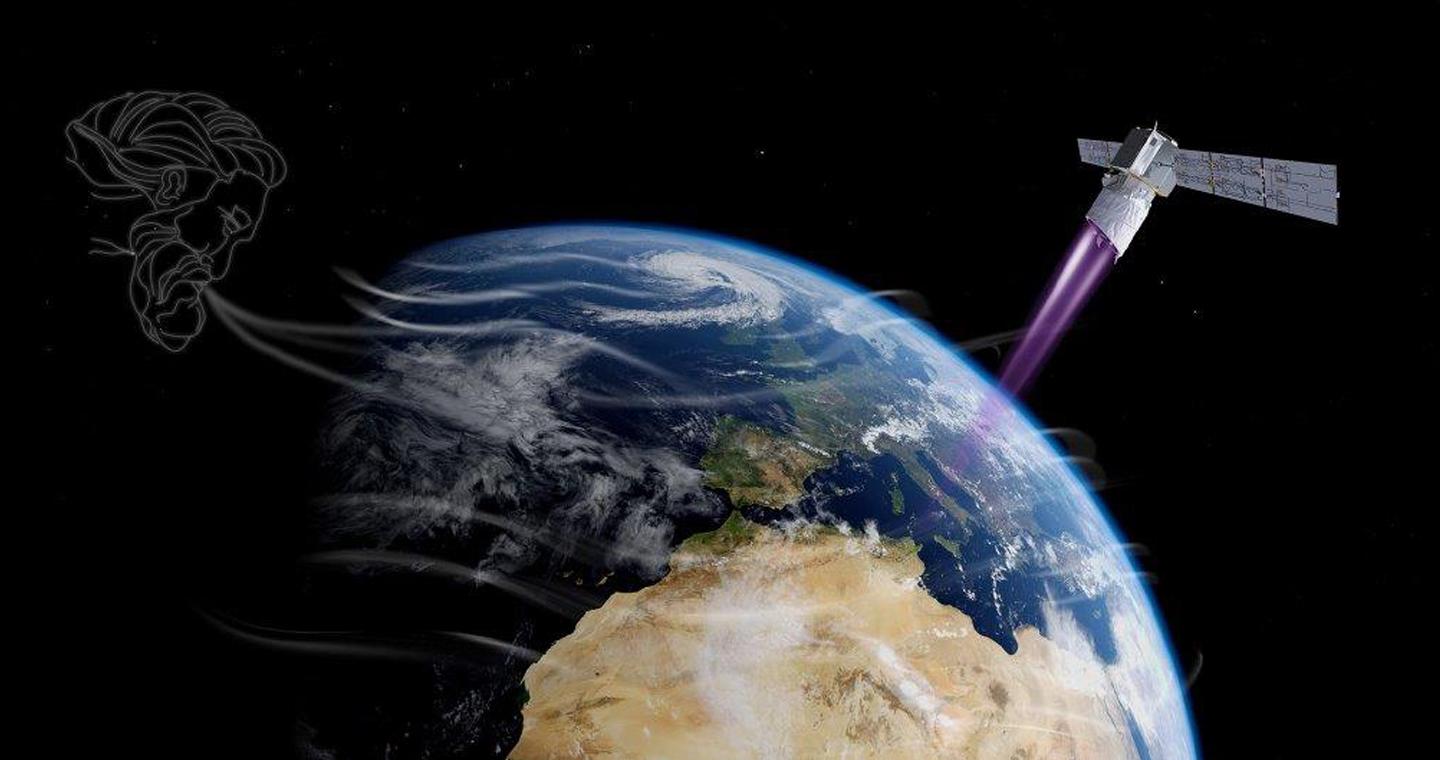Aeolus, the ESA wind hunter ready to return to Earth

After almost five years in space, Aeolus, a satellite of the European Space Agency (ESA), collected wind data up to April 2023 using the Aladin instrument created by Leonardo with the support of ASI. ESA has scheduled the splashdown in the Atlantic Ocean for 28 July.
After nearly five years in space, Aeolus is ready to return to Earth.
Aeolus is the satellite of the European Space Agency (ESA) which, launched in 2018 and no longer operational since April 2023, is preparing to return after studying the distribution of winds across the planet, from a height of 30 km to the ground, with an accuracy never achieved before.
In fact, ESA is in the final stages of carrying out an "assisted re-entry" of the spacecraft scheduled for 28 July.
The scientific results of Aeolus have gone far beyond the wildest expectations; the data collected has been distributed to the main weather forecasting services around the world and its use has resulted in economic benefits worth over 3.5 billion euros, paving the way for a new mission, Aeolus-2 which will be launched within the decade.
Successes also guaranteed by the Italian technology on board, such as the key laser instrument Lidar (Light detection and ranging), renamed Aladin (Atmospheric LAser Doppler INstrument), created by Leonardo with the support of the Italian Space Agency (ASI).
All the details.
THE MANEUVERS FOR THE RETURN
ESA's twenty Aeolus mission will re-enter the Earth's atmosphere on Friday 28 July, "presumably in the afternoon, (Italian time), in a corridor in the Atlantic Ocean", outlined ESA's head of the mission, Tommaso Parrinello
The first maneuvers will begin next week, Monday 24 July, as ESA explained in its media briefing on 19 July. Another set of commands, further lowering the satellite's altitude, will be sent three days later. The last maneuvers are therefore scheduled for 28 July and the ditching in the Atlantic Ocean is expected in the following 5 hours.
THE MISSION
In orbit for almost five years, the mission had a series of positive impacts on numerous aspects: it contributed to making weather forecasts more accurate and improved knowledge of climatic phenomena and the consequences associated with global warming and air pollution. According to the data reported by the mission, the scientists hypothesized that, in the future, it could help to improve the prediction of hurricanes, as well as to follow and predict the movements of the emitted dust, for example from volcanic eruptions.
LEONARDO'S CONTRIBUTION
A result achieved thanks to the Aladin instrument, under the responsibility of the prime contractor Airbus Defense and Space, which has on board the most powerful laser transmitter operating in the ultraviolet (UV) ever built for a space application. The super laser transmitter was created by Leonardo in Italy, in its factories in Pomezia on the outskirts of Rome and in Campi Bisenzio near Florence, with the support of the Italian Space Agency (ASI).
TOWARDS AEOLUS 2
Thanks to this success, ESA is now looking to Aeolus 2. At the Agency's ministerial meeting in November 2022, member states approved plans for a follow-up two-satellite mission, Aeolus 2, which is expected to be launched at the end of the decade in collaboration with Eumetsat already funded to the tune of around €7 billion.
ESA'S COMMITMENT TO THE REDUCTION OF SPACE DEBRIS
Finally, after the results achieved, for Aeolus there is talk of a "record-breaking return to Earth: ESA will attempt to use the little fuel left to carry out a controlled fall, the first of its kind, since Aeolus was instead designed to fall to our planet in an uncontrolled manner" explains Ansa .
"An attempt of this type has never been made before, with a satellite designed and built before the current international regulations on re-entry risk limits were implemented," explained Simonetta Cheli, head of ESA's Earth Observation programmes.
"The decision taken by ESA a month ago is the most tangible demonstration of our commitment to make space missions as safe as possible – adds Parrinello – even retroactively: the goal is to further lower the risk, which is already very small anyway".
For ESA officials, this assisted return is part of the agency's broader commitment to space safety.
At an event during last month's Paris Air Show, representatives of ESA and European satellite manufacturers announced the Zero Debris Charter initiative, an agreement to tackle the growth of space debris. ESA Director General Josef Aschbacher and executives of major European satellite manufacturers Airbus Defense and Space, OHB and Thales Alenia Space said they will jointly develop a "Zero Debris Charter", a charter with the overall goal of preventing the creation of new debris, particularly in low Earth orbit.
This is a machine translation from Italian language of a post published on Start Magazine at the URL https://www.startmag.it/innovazione/aeolus-il-cacciatore-di-venti-dellesa-pronto-al-rientro-sulla-terra/ on Sun, 23 Jul 2023 13:51:41 +0000.
